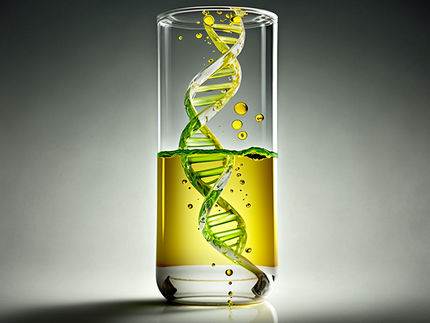New authentication method developed for the identification of β-sitosterol in edible oils
What makes this methodology particularly commendable is its ability to effectively bypass some of the traditionally cumbersome stages of analysis
In a study published in the journal food quality and Safety, researchers from Zhejiang University introduced a pioneering methodology designed to scrutinize the levels of β-sitosterol present in edible oils. With a primary focus on Virgin Camellia Oil (VCO) and Virgin olive oil (VOO), this novel approach holds immense promise for transforming authentication processes in the food sector. Instead of relying on the conventional methods, the team adeptly harnessed the power of both gas chromatography/mass spectrometry (GC/MS) and gas chromatography/flame ionization detector (GC/FID).
What makes this methodology particularly commendable is its ability to effectively bypass some of the traditionally cumbersome stages of analysis. Specifically, it eradicates the need for processes such as solid-phase extraction cartridges and thin-layer chromatography. Furthermore, the method has rendered derivatization—a previously crucial step in the determination process—wholly unnecessary. The culmination of these advancements results in a streamlined approach that markedly accelerates the procedure, while simultaneously minimizing the potential for errors due to reduced sample handling. The study also ventured beyond just introducing a new method. Delving deep into the comparative analysis of β-sitosterol in VCO and VOO, the findings were enlightening. VCO was found to contain a range of 14.1–30.2 mg/100 g of β-sitosterol, while VOO displayed a substantially higher concentration, ranging from 94.3–173.2 mg/100 g. This pronounced difference not only positions VOO as an elite source of β-sitosterol within the edible oil landscape but also emphasizes the broader health implications of the findings. Recognized for its potential health benefits, including anti-inflammatory, anti-ulcerative, and anti-tumor properties, β-sitosterol's elevated presence in VOO accentuates the oil's nutritional and therapeutic significance. Furthermore, the disparity in β-sitosterol concentrations between VCO and VOO provides a unique fingerprint for each oil. As such, β-sitosterol can be leveraged as an instrumental marker in verifying the authenticity of these oils.
The evolution of this method paves the way for its potential use in authenticating a broader spectrum of edible oils. In an era where global health awareness is escalating, understanding the precise composition of edible oils becomes instrumental, empowering consumers to make enlightened choices. The research undertaken by this team transcends merely addressing food fraud; it signifies a commitment to ensuring consumers reap the health advantages intrinsic to genuine VCO and VOO. As we chart the future, this study lays a robust groundwork for subsequent investigations and implementations within the food sector.
Original publication
Other news from the department science

Get the analytics and lab tech industry in your inbox
By submitting this form you agree that LUMITOS AG will send you the newsletter(s) selected above by email. Your data will not be passed on to third parties. Your data will be stored and processed in accordance with our data protection regulations. LUMITOS may contact you by email for the purpose of advertising or market and opinion surveys. You can revoke your consent at any time without giving reasons to LUMITOS AG, Ernst-Augustin-Str. 2, 12489 Berlin, Germany or by e-mail at revoke@lumitos.com with effect for the future. In addition, each email contains a link to unsubscribe from the corresponding newsletter.
Most read news
More news from our other portals
See the theme worlds for related content
Topic world Gas chromatography
Gas chromatography is an essential method in analytical chemistry for the separation and analysis of volatile compounds. Due to its high resolution and sensitivity, it has become firmly established in areas such as environmental analysis, food chemistry or forensic science. GC provides precise and reliable results and enables deep insights into the chemical composition of samples.

Topic world Gas chromatography
Gas chromatography is an essential method in analytical chemistry for the separation and analysis of volatile compounds. Due to its high resolution and sensitivity, it has become firmly established in areas such as environmental analysis, food chemistry or forensic science. GC provides precise and reliable results and enables deep insights into the chemical composition of samples.
Topic World Mass Spectrometry
Mass spectrometry enables us to detect and identify molecules and reveal their structure. Whether in chemistry, biochemistry or forensics - mass spectrometry opens up unexpected insights into the composition of our world. Immerse yourself in the fascinating world of mass spectrometry!

Topic World Mass Spectrometry
Mass spectrometry enables us to detect and identify molecules and reveal their structure. Whether in chemistry, biochemistry or forensics - mass spectrometry opens up unexpected insights into the composition of our world. Immerse yourself in the fascinating world of mass spectrometry!
Topic World Food Analytics
Food analysis methods enable us to investigate the quality, safety and composition of our food. Whether in the traceability of food, the detection of contaminants or the verification of nutritional information - food analytics plays a crucial role in our health and nutrition. Welcome to the exciting world of food analytics!

Topic World Food Analytics
Food analysis methods enable us to investigate the quality, safety and composition of our food. Whether in the traceability of food, the detection of contaminants or the verification of nutritional information - food analytics plays a crucial role in our health and nutrition. Welcome to the exciting world of food analytics!
























































